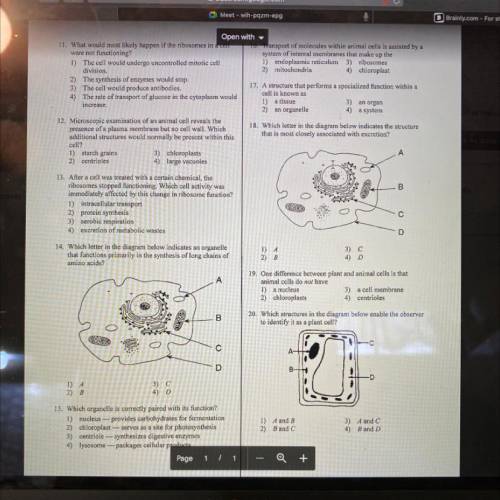ITS FOR LIVING ENVIRONMENT PLEASE HELP ME
...

Answers: 2


Another question on Biology

Biology, 21.06.2019 23:00
The tasmanian devil, a marsupial carnivore, is facing extinction due to devil facial tumor disease (dftd) which causes bulging cancerous lumps and lesions to erupt around the face and neck — often causing enough deformation to make seeing or eating difficult. dftd has evolved into a contagious cancer, a trait that is unique among cancers. devil mating behavior involves biting around the head and neck, allowing cells from one individual — especially cells from the crumbly dftd tumors — to be transferred to the wounds or face of a new individual. this marsupial was once found across australia, but sea levels rose, isolating the tasmanian population, while the australian population went extinct. what would be an outcome of genetic isolation that is likely to have impacted the spread of dftd? a) reduced territory puts diseased individuals in greater contact with non-diseased ones. b) inbreeding results in less variation in facial features so the cancer is generally fatal. c) genetic isolation has made it difficult for scientists to develop a vaccine against dftd. d) the lack of genetic variation in the immune system of tasmanian devils minimizes resistance to the disease.
Answers: 3

Biology, 22.06.2019 01:30
Scenario 5 1) take 10 red and 10 black beans and place them, mixed, on the table. record the starting phenotype # and frequencies (% of your total population) of your starting population in the table provided (generation 0). 2) act as a predator. “capture” as many organisms as you can until you have reduced the population to three organisms. put them aside. at this point, the predators die. 3) the remaining organisms each produce 2 clonal offspring. multiply your organisms accordingly and allow them to mix on the table. calculate and record the resultant phenotype # and frequencies (% of your total population) of your population in the table provided (generation 1). 4) repeat the reproduction event, allowing each of your organisms to produce 2 clonal offspring. calculate and record the resultant phenotype # and frequencies (% of your total population) of your population in the table provided (generation 2). 5) repeat the reproduction event, allowing each of your organisms to produce 2 clonal offspring. calculate and record the resultant phenotype # and frequencies (% of your total population) of your population in the table provided (generation 3).
Answers: 1

Biology, 22.06.2019 01:30
Which of the following shows the correct order in which light information travels through the eye? (2 points) lens, pupil, retina, optic nerve pupil, lens, retina, optic nerve pupil, lens, optic nerve, retina lens, pupil, optic nerve, retina
Answers: 2

Biology, 22.06.2019 04:00
Indicate the coat color and the proportion of offspring with that color for each of the following crosses of rabbits. assume all are homozygous. chinchilla x albino a) all chinchilla b) 1/2 chinchilla, 1/2 albino c) 3/4 chinchilla, 1/4 albino
Answers: 1
You know the right answer?
Questions

Mathematics, 02.10.2019 06:30


Chemistry, 02.10.2019 06:30

Mathematics, 02.10.2019 06:30


History, 02.10.2019 06:30


World Languages, 02.10.2019 06:30

English, 02.10.2019 06:30

Computers and Technology, 02.10.2019 06:30

Geography, 02.10.2019 06:30



Social Studies, 02.10.2019 06:30


English, 02.10.2019 06:30

Social Studies, 02.10.2019 06:30

History, 02.10.2019 06:30

Mathematics, 02.10.2019 06:30




